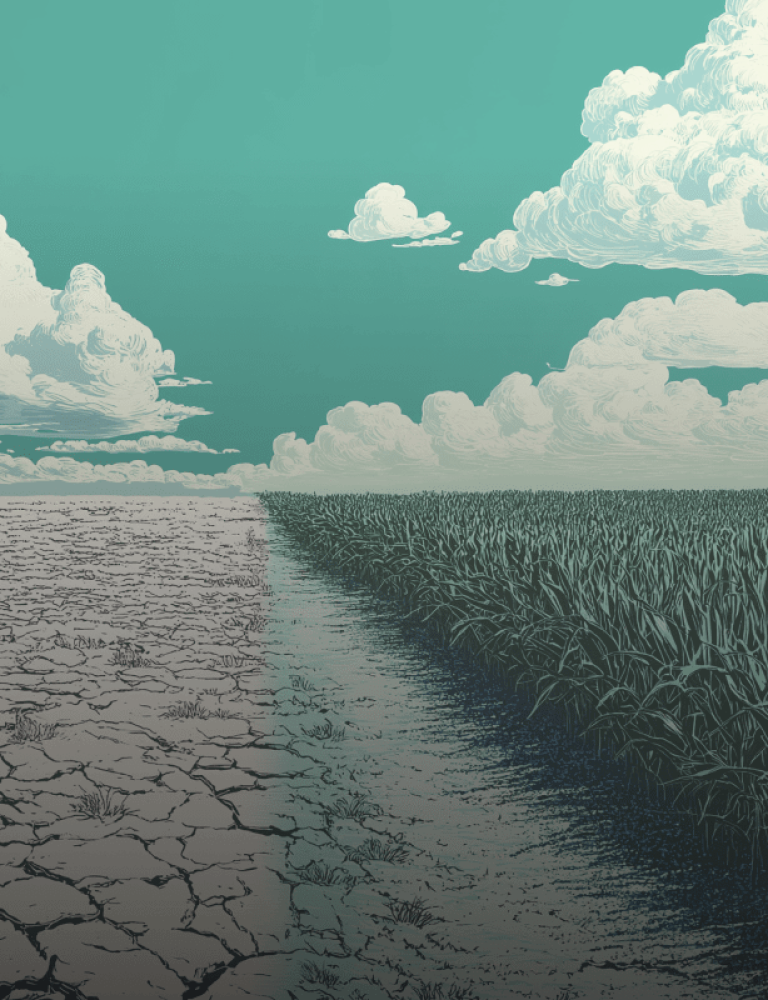Climate change is one of the greatest challenges of our time, and the role of agriculture in addressing this issue goes far beyond food production. Through innovative practices like Carbon Sequestration, farmers can not only reduce their emissions but also capture and store CO₂ from the atmosphere. In this article, we will explore how carbon sequestration works, its advantages, and the crucial role that BAIC plays in this process.
What is Carbon Sequestration?
Carbon sequestration is the process of capturing carbon dioxide (CO₂) from the atmosphere and storing it in natural reservoirs such as soil and plants. This process is essential to combat the rising concentrations of greenhouse gases, which are the main drivers of global warming.
In agriculture, soil and plants act as natural carbon sinks, absorbing CO₂ during crop growth. Through regenerative and sustainable agricultural practices, farmers can enhance this capacity, significantly contributing to climate change mitigation.
How Does Carbon Sequestration Work in Agriculture?
No-Till Farming and Cover Cropping: Techniques such as no-till farming and cover cropping increase the soil’s ability to retain carbon. Through photosynthesis, plants remove CO₂ from the atmosphere and convert it into biomass, which, when incorporated into the soil, remains stored for long periods.
Use of Natural Solutions and Bio-inputs: By reducing the use of synthetic fertilizers and pesticides, sustainable agricultural practices lower greenhouse gas emissions, complementing the effect of carbon sequestration in the soil.
Benefits of Carbon Sequestration for Farmers
Climate Change Mitigation: By capturing and storing CO₂ in the soil, farmers play a direct role in reducing global warming, helping stabilize the global climate.
Healthier Soil: The increase in organic matter makes soils more fertile, enhancing crop performance and resilience.
Increased Profitability: The adoption of practices that promote carbon sequestration, such as no-till farming and cover cropping, also improves crop profitability over time, making production more sustainable and efficient.
Water Conservation: Soils that retain more carbon also have a greater capacity to hold water, improving water efficiency and helping plants better withstand droughts.
BAIC’s Role in Carbon Sequestration
At BAIC, we believe that agriculture must be part of the climate solution. That’s why we have developed products that help farmers adopt carbon sequestration practices efficiently. Our product Viacqua®, for instance, is designed to increase water retention in the soil, an essential action for carbon sequestration and the preservation of soil structure.
Additionally, our solutions like Nutran® and PhytoTrat Premium® contribute to root strengthening and the healthy development of plants, which are crucial for capturing carbon during crop growth.
Conclusion
Carbon Sequestration is not only an opportunity to tackle climate change but also to transform agriculture into a more sustainable, profitable, and resilient practice. Farmers can play a leading role in environmental preservation by implementing practices that capture carbon and improve soil health.
BAIC is committed to providing the necessary tools for farmers to successfully adopt these practices, creating a more sustainable future for agriculture and the planet.
Want to learn more about how BAIC can help your operation capture carbon and increase productivity? Contact us and discover our solutions.
SEO Keywords: Carbon Sequestration, climate change, sustainable agriculture, CO₂ capture, BAIC solutions, regenerative practices, soil health, greenhouse gas reduction, Viacqua, Nutran.






